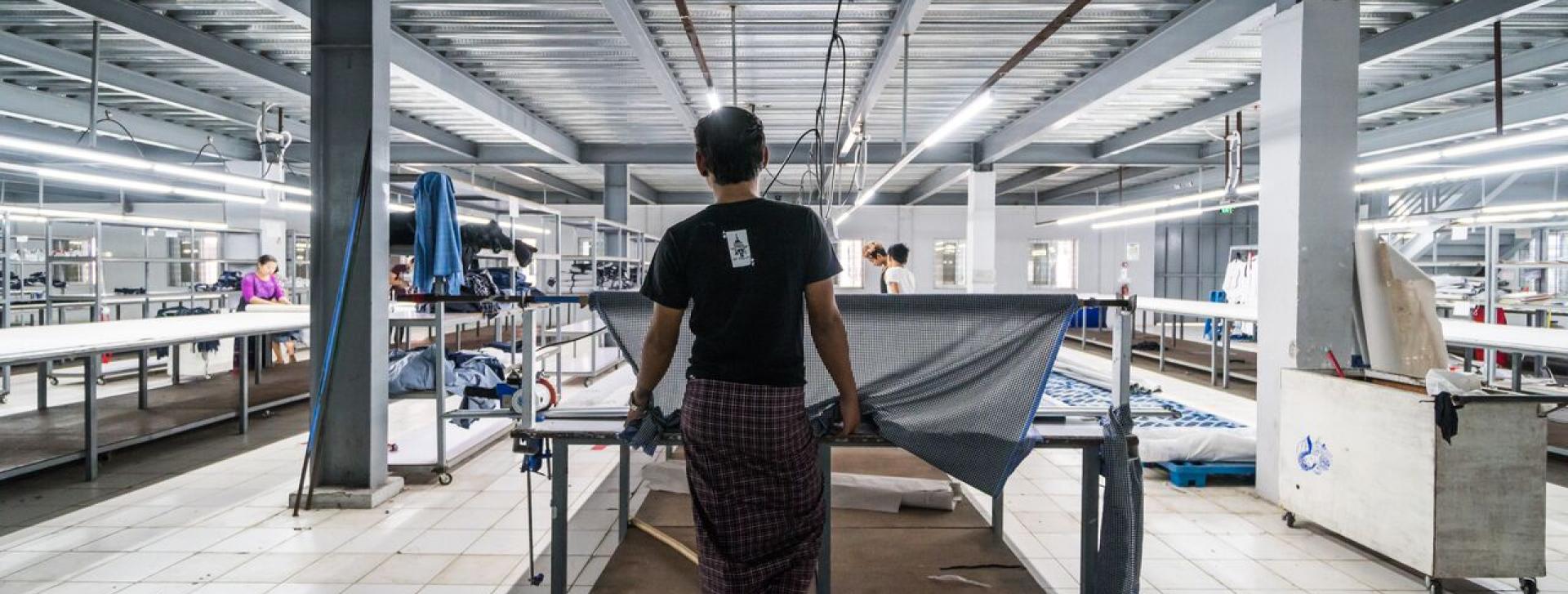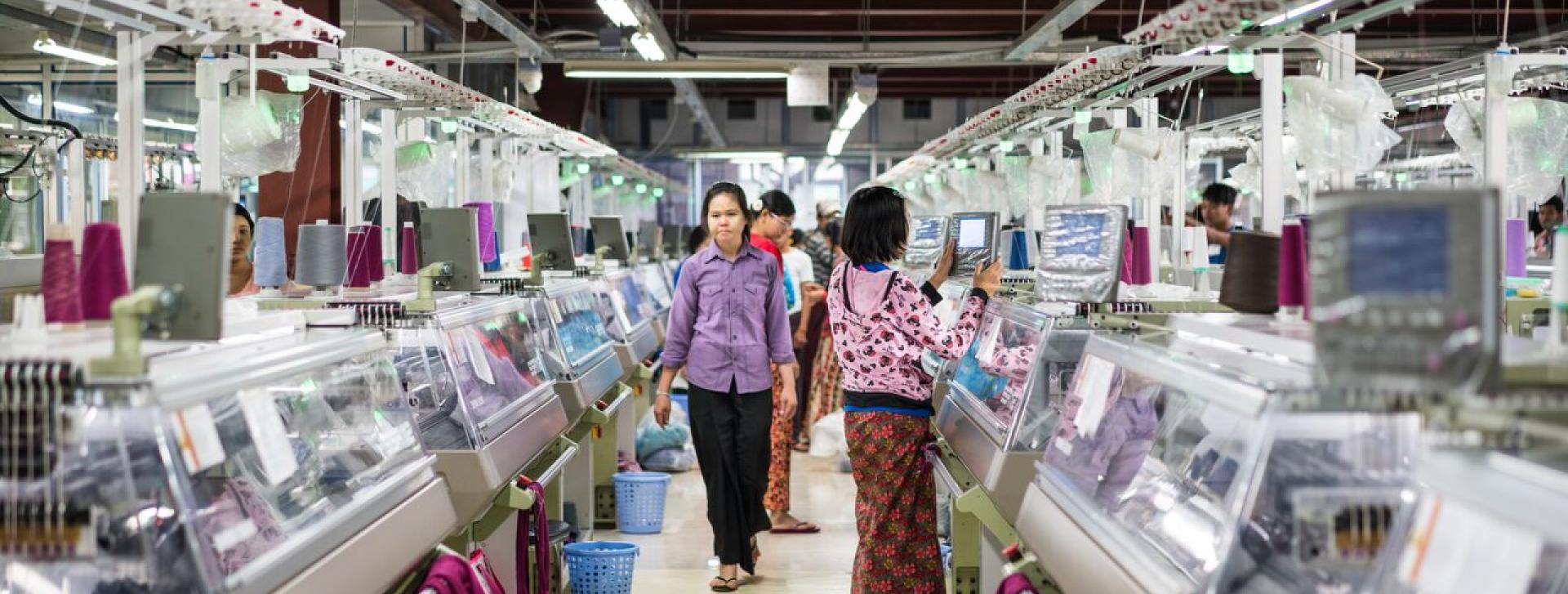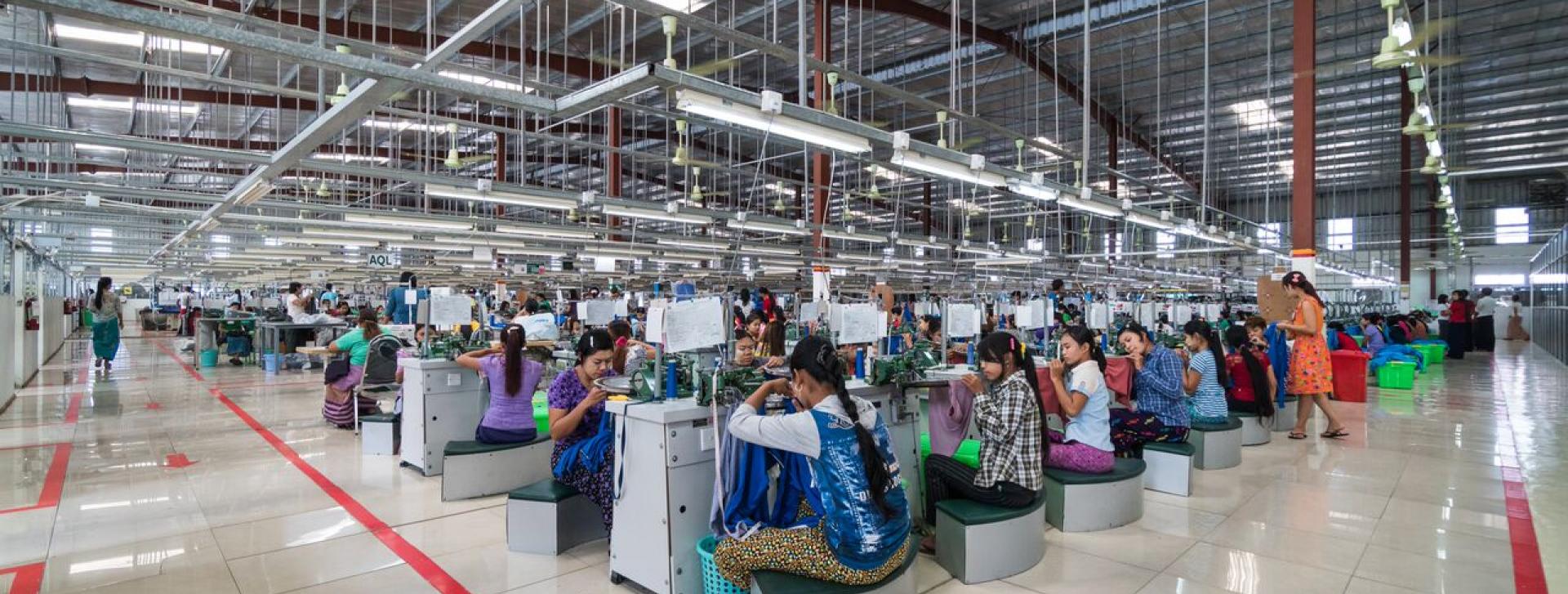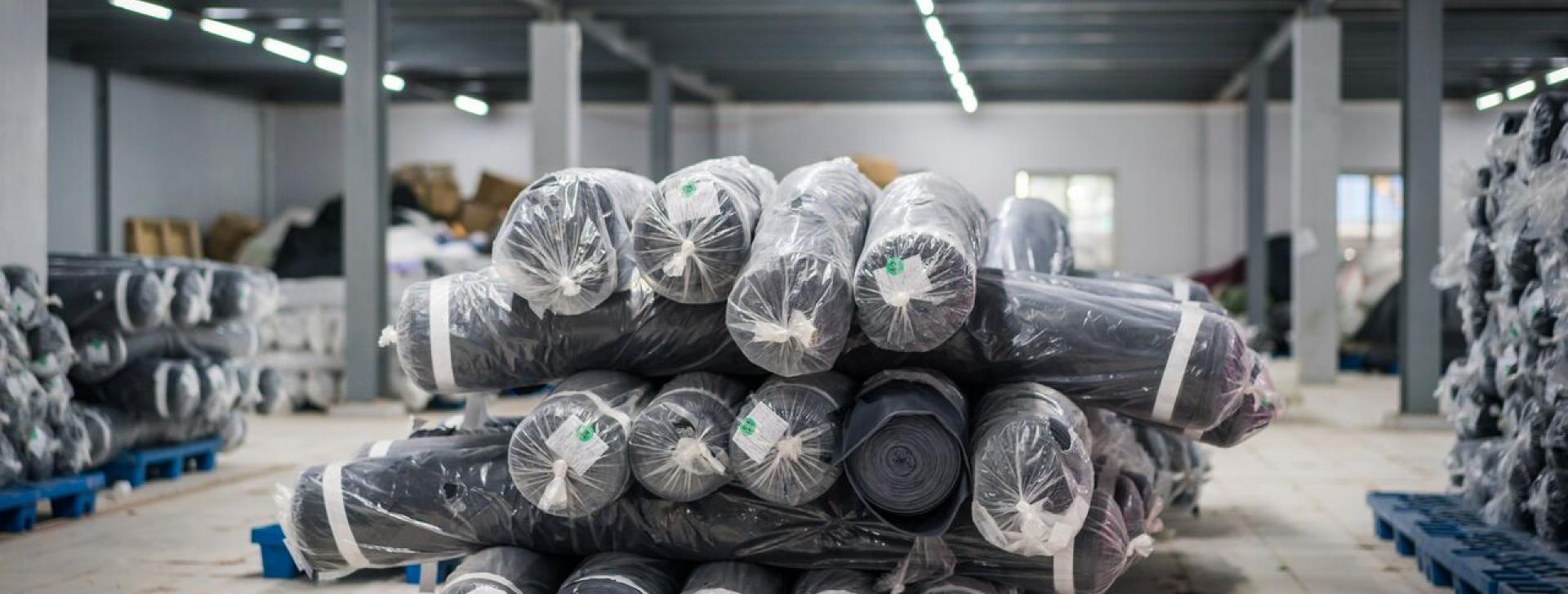A growing industry
Myanmar's garment industry exported 900 million USD worth of HS 61 and HS 62 garment products during the 2012 calendar year. During 2017, this number had grown to over 2.7 billion USD worth. Footwear exports during the same period increased from a little over 100 million USD to over 300 million USD by 2017.
These rapid increases in exports have occured due to a surge in factory investments. When SMART Myanmar began working with garment factories in early 2013 the project estimated there were about 220 factories producing apparel products in industrial scale facilities. Now, in 2018 there are over 600 production facilities in the wider apparel industry. These include:
- Approx. 540 garment factories within the MGMA.
- Approx. 60 garment factories outside the MGMA membership (mostly those who are very newly setting up or located in the Thilawa SEZ or otherwise smaller and focused on the local market). Membership of in the MGMA is not a legal requirement, but it is a requirement to avail of the duty free exemption for export-oriented garment production. Being located within an SEZ is the exception to this. As such, most garment factories in the country join the MGMA.
- Approx. 42 footwear factories producing for export markets or otherwise industrial scale facilities producing for domestic consumption.
- Approx. 20 handbag, stuffed toys, sleeping bags, and related sewn products manufacturers.
- Approx. 20 industrial scale textile factories (those manufacturing yarn and/or fabrics). These facilities vary widely in production set-up. Some are privately owned by domestic entrepreneurs. Some are foreign owned. Some still function as State-Owned Enterprises – a holdover from Myanmar's socialist government of the 1960s-1980s.
Note: The above figures consider production facilities which have about 100 employees or greater. Facilities with fewer employees than this are not included in this analysis. Textile and heritage/cottage industry workshops in Myanmar, for instance, are abundant and number in the thousands, but the average size of such operations is between 5-30 workers and they produce almost universally for the domestic market.
As the industry has grown and developed, larger and larger factories have established. The largest individual production sites for garment manufacturing now employ over 5,500 workers. Some companies employ more than this over several production sites. A survey conducted by SMART Myanmar of 29 FDI garment firms in September, 2017 revealed an average factory size of 1,187 employees.
Calculating overall industry employment figures requires some educated guesswork. Many, many factories are rapidly upscaling their workforces. As such, it is common to have new factories who are training and hiring between 50 to 100 workers per month, sometimes more. If one multiplies the MGMA mean factory size of 750 workers X 622 production facilities (we are not including the 60 facilities who are mostly assumed to be very newly setting-up) we can produce a figure of 466,500 workers across the wider industry. This figure can be presumed to be rising mostly in-sync with the volume of exports, by about 20% per year. As such, if it is accurate today, then it is likely to have increased to 560,000 over the course of the next year. Hence, this is why we use the term educated guesswork. It is easier and relatively safe to say that the wider apparel and fashion industry in Myanmar employs over half a million persons. Also consider, the ILO published a research note in 2016 that estimated the entire Myanmar apparel industry (garments, footwear, textiles), inclusive of the heritage workshops and irrespective of facility size, employed over 738,000 persons at that time.
Challenges of growth & development
*under revision*







